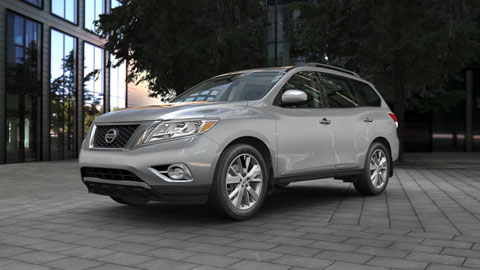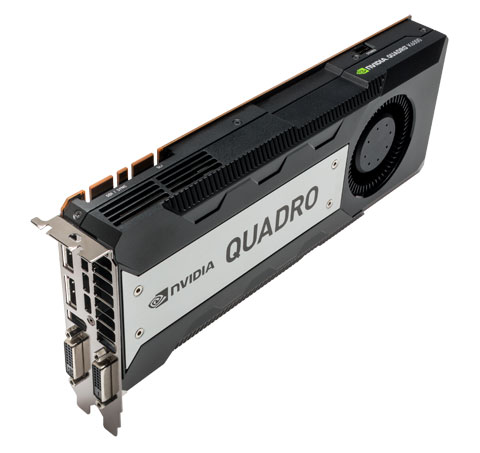
With the Quadro K6000 Nissan is now able to load nearly complete vehicle models into RTT Deltagen and ‘have stunning photorealism almost instantly’
Nvidia has unveiled the mother of all GPUs, the Quadro K6000, which boasts a whopping 12GB of on-board memory. This is double that of Nvidia’s previous generation Quadro 6000 and AMD’s flagship workstation GPU, the FirePro W9000.
For design and engineering the focus of the Quadro K6000 is very much on product styling, supporting the huge models used in automotive design. With support for four simultaneous displays (2 x DisplayPort 1.2 and 2 x DVI) plus NVIDIA Mosaic Mode there’s also a big concentration on large-scale visualisation on powerwalls.
“With Quadro K6000’s 12GB of memory, I am now able to load nearly complete vehicle models into RTT Deltagen and have stunning photorealism almost instantly,” said Dennis Malone, associate engineer, Nissan North America. “Instead of spending significant time simplifying the models to fit into previous hardware, we can now spend more time reviewing and iterating designs up front which helps avoid costly changes to tooling.”
Ever since Nvidia fleshed out its Quadro Kepler GPU family, the K6000 has been the missing piece in the range, which also includes the Quadro K5000, K4000, K2000 and K600. However, unlike the original four boards, the Quadro K6000 also has a big potential for GPU compute, for ray trace rendering and, more interestingly, simulation (FEA and CFD).

The Quadro K6000 features 2,880 CUDA processing cores, 12GB memory and support for four simultaneous displays (2 x DisplayPort 1.2 and 2 x DVI)
With 5.2TFLOPS of single precision performance it will give a big boost to ray trace rendering applications that use Nvidia iRay. However, the 1.73 TFLOPS of double precision performance is also likely to turn heads of users of CUDA-optimized simulation (CAE) software. Double precision support, a requirement for many GPU-accelerated simulation applications, is virtually non-existent on the other four Kepler Quadro boards.
But the Quadro K6000’s GPU compute capability is not just about comparing Quadro to Quadro. The Quadro K6000 also boasts more raw computational power than Nvidia’s flagship workstation GPU compute board, the Tesla K20 (5GB), which delivers 3.52 TFLOPS of single precision and 1.17 TFLOPS of double precision.
With such an impressive capacity for GPU compute it will be interesting to see how the Quadro K6000 is embraced in the workstation space. Nvidia has gone to great lengths to promote Nvidia Maximus, a multi GPU solution that dedicates Nvidia Quadro to interactive graphics and Nvidia Tesla to GPU compute.
With the Quadro K6000 offering superior compute performance to the Tesla K20, and both GPUs rated at 225W, perhaps we will see the Quadro K6000 adopted for GPU compute.
On-board memory is sometimes a limiting factor in large simulation or rendering jobs and with 12GB GDDR5 the Quadro K6000 has more than double that of a Tesla K20. This is without doubt a big advantage for power users. We can only imagine Nvidia has another Tesla board waiting in the wings to take up the challenge.
The downside of the Quadro K6000, which will ship later this year, is likely to be cost. Nvidia has not yet announced pricing, but we expect a single board will cost around £4,000 to £5,000.






